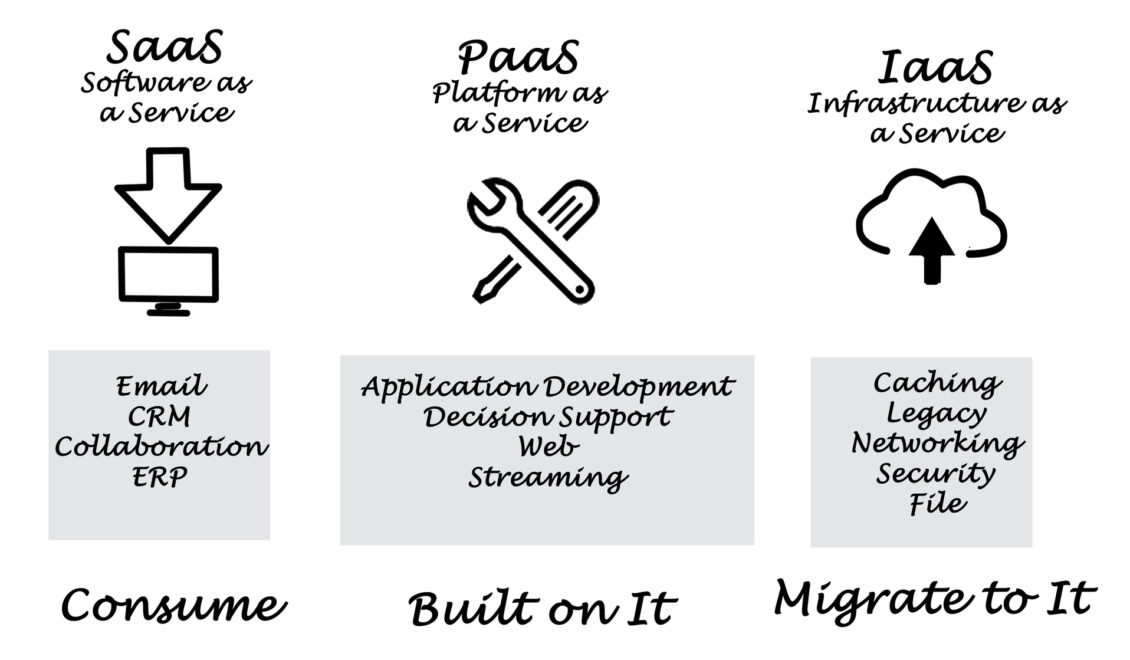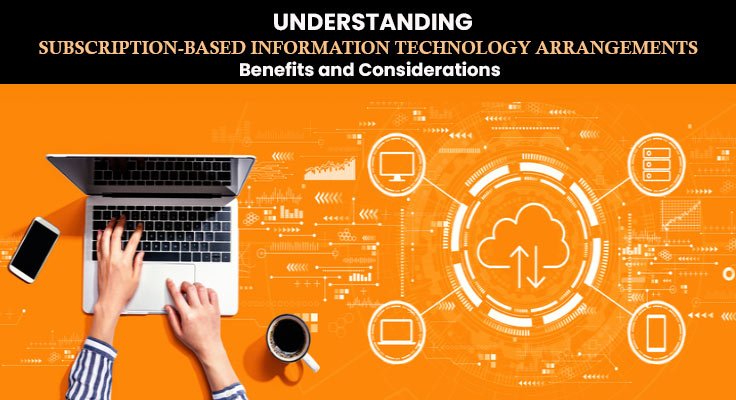Subscription-Based IT Arrangements: A Modern Approach
Subscription-based information technology arrangements have revolutionized how businesses access and utilize IT resources. This shift from traditional ownership models to a pay-as-you-go approach offers numerous benefits, including cost optimization, scalability, […]

Subscription-based information technology arrangements have revolutionized how businesses access and utilize IT resources. This shift from traditional ownership models to a pay-as-you-go approach offers numerous benefits, including cost optimization, scalability, and access to cutting-edge technology. This article delves into the intricacies of subscription-based IT arrangements, exploring their advantages, challenges, and implications for businesses in the digital age.
From Software as a Service (SaaS) to Infrastructure as a Service (IaaS) and Platform as a Service (PaaS), various subscription models cater to diverse IT needs. This flexibility allows organizations to tailor their IT solutions to specific requirements, ensuring optimal resource allocation and cost-effectiveness. However, the adoption of subscription-based arrangements also presents challenges, such as vendor lock-in, security considerations, and potential reliance on third-party providers.
Impact on Business Operations: Subscription-based Information Technology Arrangements
Subscription-based IT arrangements can significantly impact various aspects of business operations, offering advantages and challenges. By shifting from traditional capital expenditure (CAPEX) models to operational expenditure (OPEX), organizations can gain agility and flexibility, allowing them to adapt to changing business needs and market dynamics.
Impact on IT Infrastructure
Subscription-based IT arrangements can streamline IT infrastructure management. Organizations can access and utilize a wide range of IT resources, including software, hardware, and cloud services, on demand. This eliminates the need for significant upfront investments in infrastructure, reducing capital expenditures and freeing up resources for other business initiatives.
- Reduced Capital Expenditures: Subscription models allow organizations to access IT resources without large upfront investments, enabling them to allocate capital more strategically towards core business activities.
- Scalability and Flexibility: Subscription-based IT arrangements provide organizations with the ability to scale their IT infrastructure up or down based on their changing needs, ensuring they have the necessary resources at any given time. This flexibility is crucial for businesses facing fluctuating workloads or experiencing rapid growth.
- Improved Agility and Responsiveness: By eliminating the need for long procurement cycles and complex infrastructure management, subscription models enable organizations to respond quickly to market opportunities and changing business requirements.
Impact on Data Management
Subscription-based IT arrangements can enhance data management capabilities by providing access to advanced data storage, processing, and analytics tools. Organizations can leverage these tools to gain valuable insights from their data, enabling data-driven decision-making and improving operational efficiency.
- Enhanced Data Security: Subscription-based IT providers often offer robust security measures, including data encryption, access controls, and disaster recovery capabilities. This can help organizations mitigate the risk of data breaches and ensure the confidentiality, integrity, and availability of their data.
- Improved Data Analytics: Subscription models provide access to advanced data analytics platforms and tools, enabling organizations to extract valuable insights from their data and gain a competitive advantage. These insights can be used to optimize business processes, identify new market opportunities, and improve customer experiences.
- Streamlined Data Management: By outsourcing data management tasks to subscription providers, organizations can reduce the burden on their internal IT teams, freeing them to focus on other strategic initiatives. This can also lead to improved data quality and consistency.
Impact on Employee Productivity
Subscription-based IT arrangements can empower employees by providing them with access to the latest technologies and tools, improving their productivity and enabling them to work more efficiently.
- Access to Latest Technologies: Subscription models ensure that employees have access to the latest software and hardware, enabling them to perform their tasks more efficiently and effectively. This can lead to increased productivity and improved collaboration.
- Improved Collaboration and Communication: Subscription-based IT arrangements often include collaboration tools, such as cloud-based document sharing platforms and video conferencing software, which can enhance communication and collaboration among employees, regardless of their location.
- Reduced Downtime and IT Support Issues: By outsourcing IT support to subscription providers, organizations can reduce the time employees spend dealing with technical issues, allowing them to focus on their core responsibilities. This can lead to increased productivity and reduced frustration.
Facilitating Digital Transformation
Subscription-based IT arrangements can accelerate digital transformation by providing organizations with the flexibility and agility they need to adopt new technologies and business models. By leveraging cloud services, artificial intelligence, and other emerging technologies, organizations can enhance their operations, improve customer experiences, and gain a competitive advantage.
- Rapid Adoption of New Technologies: Subscription models allow organizations to quickly adopt new technologies without significant upfront investments, enabling them to stay ahead of the competition and embrace digital transformation initiatives.
- Enabling New Business Models: Subscription-based IT arrangements can support the development and implementation of new business models, such as subscription-based services or digital marketplaces. This can open up new revenue streams and create new opportunities for growth.
- Enhanced Customer Experiences: By leveraging cloud services and other digital technologies, organizations can enhance customer experiences, providing personalized services, improved support, and seamless interactions across channels.
Case Studies and Examples

Real-world examples provide valuable insights into the successful implementation of subscription-based IT arrangements. By examining the experiences of organizations that have embraced this model, we can understand the benefits, challenges, and lessons learned.
Examples of Organizations Using Subscription-Based IT Arrangements
Several organizations have successfully transitioned to subscription-based IT arrangements, reaping significant benefits.
- Netflix: The streaming giant has revolutionized entertainment delivery by offering a subscription-based model. Its success lies in its ability to provide a vast library of content, personalized recommendations, and seamless access across multiple devices.
- Microsoft: Microsoft’s shift towards subscription-based services, including Office 365 and Azure, has allowed it to generate predictable revenue streams and cater to diverse customer needs.
- Salesforce: As a pioneer in cloud-based software, Salesforce offers a subscription-based model for its customer relationship management (CRM) solutions. This model has enabled the company to achieve significant growth and scale.
Benefits and Challenges of Subscription-Based IT Arrangements
The benefits and challenges of subscription-based IT arrangements are multifaceted and vary depending on the specific organization and its context.
Benefits
- Predictable Costs: Subscription models provide organizations with predictable monthly or annual costs, eliminating the need for large upfront investments in hardware and software.
- Scalability and Flexibility: Subscription-based arrangements offer flexibility to scale IT resources up or down as needed, aligning IT spending with business requirements.
- Access to Latest Technology: Subscription models ensure access to the latest technology updates and upgrades without requiring separate purchases.
- Reduced IT Management Burden: Subscription-based services often include support and maintenance, reducing the burden on internal IT teams.
Challenges
- Vendor Lock-in: Organizations may face challenges in switching vendors if they are locked into long-term contracts.
- Security Concerns: Data security is paramount in subscription-based arrangements, and organizations must carefully evaluate vendor security practices.
- Internet Dependence: Subscription-based IT arrangements often rely on internet connectivity, which can pose challenges in areas with unreliable or limited access.
- Potential for Cost Increases: Subscription fees may increase over time, impacting the overall cost of IT services.
Lessons Learned from Case Studies, Subscription-based information technology arrangements
Analyzing the experiences of organizations that have successfully implemented subscription-based IT arrangements provides valuable lessons for others considering this model.
- Thorough Vendor Due Diligence: Before committing to a subscription-based arrangement, organizations must conduct thorough due diligence on potential vendors, assessing their financial stability, track record, security practices, and customer support.
- Clear Contractual Agreements: Organizations should ensure that their contracts with vendors clearly define the scope of services, pricing, renewal terms, and termination clauses.
- Strong Internal Alignment: Successful implementation of subscription-based IT arrangements requires strong alignment between IT and business stakeholders.
- Continuous Monitoring and Evaluation: Organizations should regularly monitor the performance of subscription-based services and evaluate their alignment with evolving business needs.
Last Recap

As technology continues to evolve, subscription-based IT arrangements are poised to play an increasingly prominent role in shaping the future of business operations. Their ability to empower organizations with agility, innovation, and cost efficiency makes them a compelling choice for businesses seeking to thrive in the dynamic digital landscape. Understanding the nuances of these arrangements, including their benefits, challenges, and implementation considerations, is crucial for organizations looking to leverage the transformative power of subscription-based IT models.
Subscription-based information technology arrangements are becoming increasingly popular, offering businesses a flexible and cost-effective way to access the latest software and services. This model is also finding its way into the healthcare industry, with new chiropractic technology, like that found at smartorders.ca , offering practitioners access to cutting-edge tools and resources through subscription plans.
This trend towards subscription-based IT arrangements is likely to continue as businesses and healthcare providers seek to optimize their technology investments.









